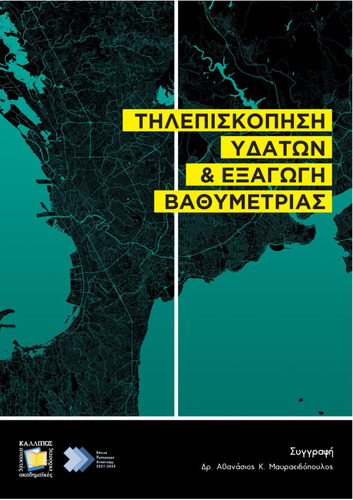| Title Details: | |
|
Waters remote sensing and bathymetry extraction |
|
| Authors: |
Mavraeidopoulos, Athanasios |
| Reviewer: |
Palikaris, Athanasios |
| Subject: | NATURAL SCIENCES AND AGRICULTURAL SCIENCES > EARTH SCIENCES > OCEANOGRAPHY > GEOLOGICAL OCEANOGRAPHY (MARINE GEOLOGY) NATURAL SCIENCES AND AGRICULTURAL SCIENCES > EARTH SCIENCES > GEOGRAPHY > PHYSICAL GEOGRAPHY ENGINEERING AND TECHNOLOGY > TECHNOLOGICAL SCIENCES AND ENGINEERING > RURAL AND SURVEYING ENGINEERING > HYDROGRAPHY- OCEANOGRAPHY ENGINEERING AND TECHNOLOGY > TECHNOLOGICAL SCIENCES AND ENGINEERING > RURAL AND SURVEYING ENGINEERING > PHΟTOINTERPRETATION-REMOTE SENSING ENGINEERING AND TECHNOLOGY > TECHNOLOGICAL SCIENCES AND ENGINEERING > RURAL AND SURVEYING ENGINEERING > GEOGRAPHIC INFORMATION SYSTEMS (GIS) |
| Keywords: |
Waters remote sensing
Bathymetry Satellite derived bathymetry Shipping safety International technical specifications for hydrographic surveys International technical specifications for production of printed and nautical charts |
| Description: | |
| Abstract: |
Each year, human draws from the environment more and more energy and water resources, raw materials and goods, in the framework of a growing and more demanding world. At the same time, the marine ecosystem is burdened every year more and more by anthropogenic activities, and their consequences are expected to limit the available natural resources in future. At the same time, the growing trend of extracting and processing oil and natural gas from marine areas requires modern sea transport procedures through which these products will be stored and transported to the consumer- countries. Trade in goods by ship is still the main mode of transport for international trade, since over 80% of world trade is carried out by sea. The aforementioned trend in maritime transport must be done in safe conditions for the marine and coastal environment and without disturbing the balance of its aquatic ecosystems.
The International Maritime Organization (IMO) has focused on many environmental issues, with the result that this policy causes corresponding developments in shipping issues. In this context, shipping is entering a new era, in which navigation and general transport management processes are increasingly automated. However, there are several concerns about how easy it is to combine all of the above, i.e. protecting the environment, not accelerating climate change, developments in technology, the possibility of rapid assimilation of new technologies by seafarers, etc. Realizing the difficulties of situation, the International Maritime Organization (IMO) and the International Hydrographic Organization (IHO) try to standardize the products and services used by users (shippers) using uniform procedures and standards (Standards). The above standardization makes use of the already acquired experience and knowledge of the parties involved in shipping and aims to provide directions, so that states can achieve the greatest possible uniformity in the issued nautical charts and other maritime publications.
|
| Linguistic Editors: |
Kalliaras, Dimitrios |
| Graphic Editors: |
Stragali, Faidra |
| Type: |
Postgraduate textbook |
| Creation Date: | 07-09-2022 |
| Item Details: | |
| ISBN |
978-618-5667-43-6 |
| License: |
Attribution - NonCommercial - ShareAlike 4.0 International (CC BY-NC-SA 4.0) |
| DOI | http://dx.doi.org/10.57713/kallipos-66 |
| Handle | http://hdl.handle.net/11419/8512 |
| Bibliographic Reference: | Mavraeidopoulos, A. (2022). Waters remote sensing and bathymetry extraction [Postgraduate textbook]. Kallipos, Open Academic Editions. https://dx.doi.org/10.57713/kallipos-66 |
| Language: |
Greek |
| Consists of: |
1. Introduction 2. Optical properties of water 3. The bathymetry of nautical charts 4. Methods and specifications for carrying out bathymetry for the publication and updating of nautical charts 5. International Nautical Charts specifications & international certification of hydrographers and nautical cartographers 6. Epilogue 7. Applications |
| Number of pages |
184 |
| Publication Origin: |
Kallipos, Open Academic Editions |
| User comments | |
There are no published comments available! | |

